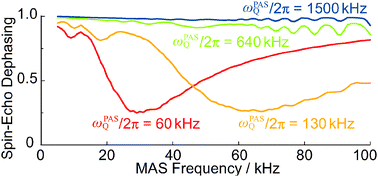Towards homonuclear Jsolid-state NMR correlation experiments for half-integer quadrupolar nuclei: experimental and simulated 11B MAS spin-echo dephasing and calculated 2JBB coupling constants for lithium diborate†
Abstract

* Corresponding authors
a
Department of Physics, University of Warwick, Coventry, UK
E-mail:
S.P.Brown@warwick.ac.uk
b Department of Materials, University of Oxford, Parks Road, Oxford OX1 3PH, UK
c Physics Department, Coe College, Cedar Rapids, USA
d School of Chemistry, University of St Andrews and EaStCHEM, St Andrews, Fife KY16 9ST, UK
e Department of Chemistry, University of Durham, South Road, Durham, UK

 Please wait while we load your content...
Something went wrong. Try again?
Please wait while we load your content...
Something went wrong. Try again?
N. S. Barrow, J. R. Yates, S. A. Feller, D. Holland, S. E. Ashbrook, P. Hodgkinson and S. P. Brown, Phys. Chem. Chem. Phys., 2011, 13, 5778 DOI: 10.1039/C0CP02343D
To request permission to reproduce material from this article, please go to the Copyright Clearance Center request page.
If you are an author contributing to an RSC publication, you do not need to request permission provided correct acknowledgement is given.
If you are the author of this article, you do not need to request permission to reproduce figures and diagrams provided correct acknowledgement is given. If you want to reproduce the whole article in a third-party publication (excluding your thesis/dissertation for which permission is not required) please go to the Copyright Clearance Center request page.
Read more about how to correctly acknowledge RSC content.
 Fetching data from CrossRef.
Fetching data from CrossRef.
This may take some time to load.
Loading related content
